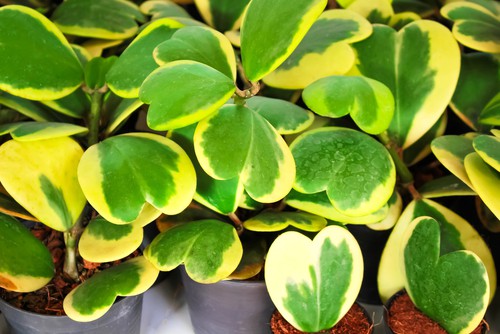Hoya plants are a popular choice for indoor gardeners due to their beautiful foliage and ease of care. However, one problem that many hoya plant owners face is hoya leaves turning yellow and falling off. This can be frustrating and concerning, but there are several common reasons why this may be happening.
Understanding hoya plants is key to identifying the cause of yellowing leaves. Hoya plants are native to tropical and subtropical regions and prefer bright, indirect light and well-draining soil.
They are also sensitive to overwatering and can be susceptible to pest infestations. By taking these factors into consideration, it is possible to determine the cause of yellowing leaves and take the necessary steps to fix the problem.
Key Takeaways
- Yellowing and falling off of hoya leaves is a common problem that can be caused by several factors.
- Lighting, temperature, watering, nutrient deficiencies, pests, and soil composition can all contribute to yellowing leaves.
- Proper care, including appropriate watering and fertilization, can help prevent yellowing and promote healthy hoya plants.
Other popular posts you shouldn’t miss on:
Understanding Hoya Plants
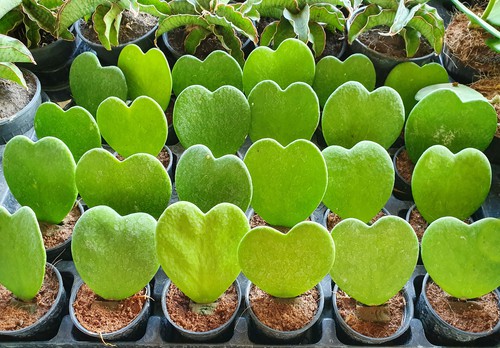
Hoya, also known as wax plant, is a genus of plants native to Asia. It is a popular houseplant due to its beautiful and fragrant flowers. The plant is a member of the family Apocynaceae and has over 200 species. The most common species of hoya plant is Hoya carnosa.
Hoya plants are succulent-like and have thick, waxy leaves that store water. They are known for their long vines, which can grow up to 10 feet long. The plant is easy to care for and can thrive in a variety of conditions.
In their natural habitats, Hoya plants grow in tropical areas and can be found in the forests of Asia. They are epiphytes, which means that they grow on other plants. The plant has adapted to living in low light conditions and can survive on very little water.
Hoyas are popular houseplants due to their unique appearance and ease of care. They are perfect for beginners and can add a touch of green to any space. The plant can be grown in a variety of containers and can be trained to grow on trellises or poles.
Hoya Leaves Turning Yellow and Falling Off – 5 Common Problems
Hoya plants are known for their attractive foliage and beautiful flowers. However, yellowing of Hoya leaves is a common problem that can be caused by a variety of factors. In this section, we will discuss some of the most common reasons for yellowing Hoya leaves.
1. Overwatering
Overwatering is one of the most common reasons for yellowing Hoya leaves. When a Hoya plant is overwatered, the roots become waterlogged, which can lead to root rot. Root rot can cause the leaves to turn yellow and eventually fall off.
To avoid overwatering, it is important to ensure that the soil is well-draining and that the plant is not sitting in water.
2. Underwatering
Underwatering can also cause Hoya leaves to turn yellow. When a Hoya plant is underwatered, the leaves can become dry and brittle, which can cause them to turn yellow and eventually fall off. To avoid underwatering, it is important to water the plant regularly and ensure that the soil is moist but not waterlogged.
3. Nutrient Deficiency
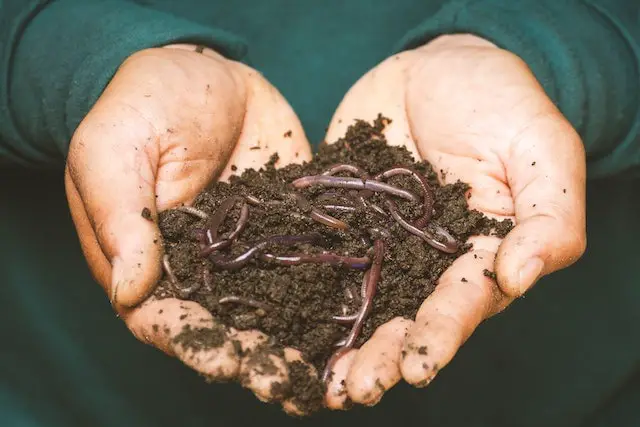
Hoya plants require a balanced supply of nutrients to grow healthy foliage. A deficiency in any of the essential nutrients can cause the leaves to turn yellow and eventually fall off.
The most common nutrient deficiencies that cause yellowing of Hoya leaves are nitrogen, iron, and magnesium. To avoid nutrient deficiencies, it is important to fertilize the plant regularly with a balanced fertilizer.
4. Sunlight
Hoya plants require bright, indirect sunlight to grow healthy foliage. If a Hoya plant is placed in direct sunlight, the leaves can become scorched and turn yellow. On the other hand, if a Hoya plant is placed in a low-light area, the leaves can become pale and yellow.
To avoid sunlight-related yellowing, it is important to place the plant in a bright, indirect light source.
5. Pests
Pests such as spider mites and mealybugs can cause Hoya leaves to turn yellow and eventually fall off. These pests feed on the sap of the plant, which can cause the leaves to become discolored and weak. To avoid pest-related yellowing, it is important to inspect the plant regularly and treat any pest infestations promptly.
Lighting and Temperature Factors
Hoya plants require bright, indirect sunlight to thrive. Direct sunlight can scorch the leaves, causing them to turn yellow and fall off. Inadequate lighting can also lead to yellow leaves, especially if the plant is situated too far from a window or in a poorly lit area.
Artificial lighting can be used to supplement natural light, but it’s important to choose the right type of bulb and keep it at the correct distance from the plant. Hoya plants need at least 12 hours of light per day to thrive.
Temperature is another important factor to consider when it comes to hoya plants. High temperatures can cause the plant to wilt and the leaves to turn yellow. Cold weather can also be problematic, especially if the plant is exposed to drafts or kept in a room that is too cold.
To ensure that the plant is getting enough oxygen, it’s important to avoid overwatering and to make sure that the soil is well-draining. Poorly draining soil can lead to root rot, which can cause the leaves to turn yellow and fall off.
Photosynthesis is the process by which plants convert light into energy. Without enough light, hoya plants may not be able to carry out photosynthesis properly, which can lead to yellow leaves.
Watering and Drainage Issues
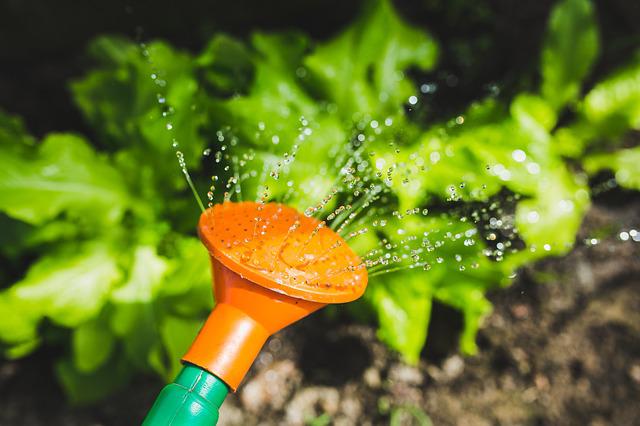
Improper watering and drainage issues are common reasons why Hoya leaves turn yellow and fall off. Hoya plants require a well-draining soil and moderate watering, and any deviation from this can lead to problems.
1. Overwatering
Overwatering is a common mistake made by Hoya plant owners. When the soil is constantly wet, it can lead to root rot and other fungal diseases. The roots become waterlogged and are unable to absorb oxygen, leading to the death of the plant. Signs of overwatering include yellow leaves, wilting, and a mushy stem.
To prevent overwatering, ensure that the soil is well-draining and that the pot has drainage holes. It is also important to water the plant only when the top inch of soil is dry. When watering, use lukewarm water and avoid getting water on the leaves.
2. Underwatering
Underwatering is another common issue that can cause Hoya leaves to turn yellow. When the plant does not receive enough water, the leaves will start to wilt and turn yellow. In severe cases, the leaves may fall off.
To prevent underwatering, ensure that the soil is moist but not waterlogged. Water the plant when the top inch of soil is dry, and ensure that the pot has drainage holes to prevent water from accumulating at the bottom of the pot.
3. Soil Moisture and Drainage
The soil moisture and drainage are crucial factors in Hoya plant care. The soil should be well-draining, and the pot should have drainage holes to prevent water from accumulating at the bottom of the pot.
Distilled water is recommended for Hoya plants as tap water can contain chemicals and minerals that can harm the plant. Rainwater can also be used as it is free of chemicals and minerals.
It is important to have a watering schedule for Hoya plants and to stick to it. Watering too frequently or infrequently can lead to problems.
4. Watering Techniques
When watering Hoya plants, it is important to water the soil and not the leaves. Watering the leaves can lead to fungal diseases and other problems. It is also important to use lukewarm water as cold water can shock the roots.
Nutrient Deficiencies and Fertilizer Problems
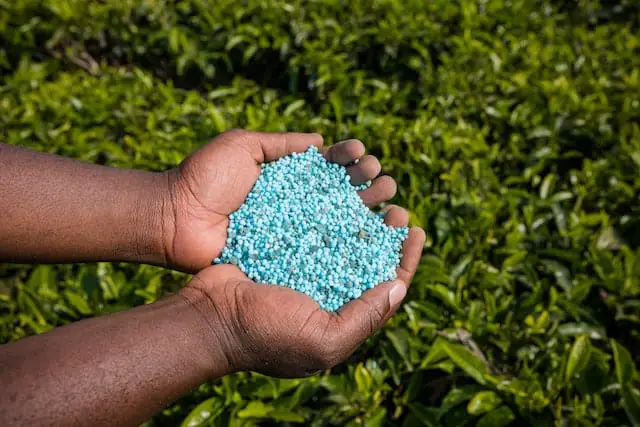
Hoya plants require a balanced amount of nutrients to maintain their vibrant foliage. Nutrient deficiencies can cause Hoya leaves to turn yellow and eventually fall off. The most common nutrient deficiencies in Hoya plants are nitrogen, potassium, magnesium, and phosphorous.
Nitrogen is an essential nutrient for Hoya plants, and a deficiency can cause yellowing of the leaves. This is because nitrogen is necessary for the production of chlorophyll, which gives the leaves their green color.
A lack of nitrogen can cause the leaves to turn yellow and eventually fall off. To fix this issue, a balanced fertilizer with a higher nitrogen content can be applied.
Potassium is another essential nutrient for Hoya plants. A deficiency of potassium can cause yellowing of the leaves, especially around the edges. This is because potassium helps regulate water movement in the plant.
A lack of potassium can cause the plant to lose water, leading to yellowing and curling of the leaves. To fix this issue, a balanced fertilizer with a higher potassium content can be applied.
Magnesium is also important for Hoya plants, and a deficiency can cause yellowing of the leaves. This is because magnesium is an essential component of chlorophyll. A lack of magnesium can cause the leaves to turn yellow, and the veins to remain green.
To fix this issue, a balanced fertilizer with a higher magnesium content can be applied.
Phosphorous is necessary for the growth and development of Hoya plants. A deficiency of phosphorous can cause yellowing of the leaves and stunted growth. This is because phosphorous is essential for energy transfer within the plant. To fix this issue, a balanced fertilizer with a higher phosphorous content can be applied.
Fertilizer problems can also cause yellowing of Hoya leaves. Over-fertilization can cause nutrient burn, which can lead to yellowing and browning of the leaves. Under-fertilization can cause nutrient deficiencies, which can also lead to yellowing of the leaves.
It is important to use a balanced fertilizer and follow the recommended application rates to avoid fertilizer problems.
Disease and Pest Infestations
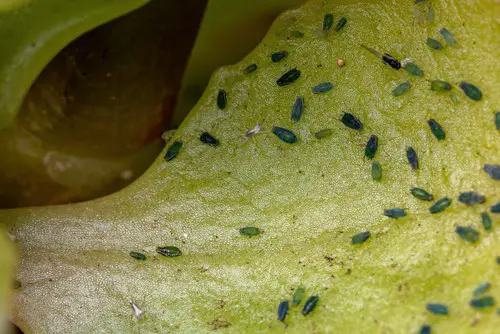
Hoya plants are prone to disease and pest infestations, which can cause leaves to turn yellow and fall off. These issues can be caused by a variety of factors, including poor growing conditions, overwatering, and lack of proper care.
One of the most common diseases affecting hoya plants is root rot, which is caused by overwatering. When the roots are constantly wet, they can become damaged and begin to rot. This can lead to yellowing and wilting of the leaves, as well as stunted growth and eventual death of the plant.
Another common problem is pest infestations, which can be caused by aphids, mealybugs, and other insects. These pests can feed on the leaves and stems of the plant, causing damage and discoloration. In severe cases, they can even kill the plant.
To prevent disease and pest infestations, it is important to provide proper care for your hoya plant. This includes providing adequate drainage, avoiding overwatering, and ensuring that the plant is not exposed to extreme temperatures or drafts.
It is also important to regularly inspect the plant for signs of disease or pests, and to take action promptly if any issues are detected.
If you notice yellowing or wilting of the leaves, it is important to determine the underlying cause and take appropriate action. This may involve adjusting the growing conditions, treating the plant with insecticides or fungicides, or simply giving the plant time to recover on its own.
With proper care and attention, your hoya plant can thrive and remain healthy for years to come.
Repotting and Soil Composition
Repotting is an essential aspect of maintaining a healthy Hoya plant. When the roots outgrow the pot, the plant becomes root-bound, which can cause yellowing and dropping of leaves. Repotting provides the plant with fresh soil and enough space for the roots to grow, leading to healthier foliage.
When repotting, it is crucial to ensure that the new pot is larger than the previous one. A pot that is too small can cause the plant to become root-bound again quickly. Additionally, the soil composition must be appropriate for the Hoya plant.
A well-draining potting mix is ideal for Hoyas. It should be aerated and contain perlite, cactus mix, and sphagnum moss. These components help to improve soil drainage and prevent the soil from becoming waterlogged. House plant compost can also be added to the potting mix to provide the plant with essential nutrients.
When repotting, it is essential to remove as much of the old soil as possible without damaging the roots. The roots should be carefully untangled, and any dead or damaged roots should be removed. The plant should then be placed in the new pot, and fresh soil should be added around the roots.
After repotting, the plant should be watered thoroughly to help settle the soil. It is crucial not to water the plant immediately after repotting, as this can cause the roots to become waterlogged and lead to root rot. Instead, wait a few days before watering the plant.
Hoya Leaf Recovery and Prevention
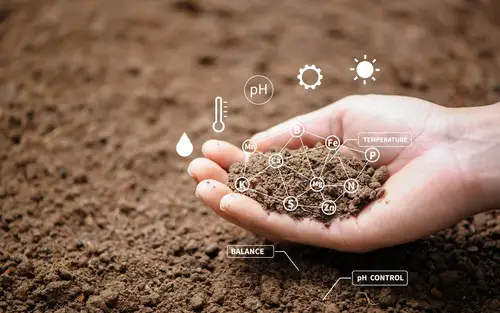
When it comes to Hoya plants, yellow leaves are a common issue that can be caused by a variety of factors. While it can be frustrating to see your prized plant suffering, there are steps you can take to help it recover and prevent future issues.
1. Identifying the Cause
Before you can take steps to recover your Hoya plant, it’s important to identify the cause of the yellowing leaves. This can be a bit tricky since there are several possible culprits, including not enough water, low humidity, and pests like spider mites or aphids. Additionally, hoya leaves can turn brown or fall off entirely.
2. Recovery Steps
Once you’ve identified the cause of your Hoya plant’s yellowing leaves, you can take steps to help it recover. For example, if the issue is due to not enough water, you can increase your watering frequency or adjust your watering schedule.
On the other hand, if the issue is due to low humidity, you can try misting the leaves or placing a humidifier nearby.
If your Hoya plant has already lost a significant number of leaves, don’t panic. With proper care, it is possible for the plant to recover. You can help it along by providing it with the right amount of light, water, and humidity.
3. Prevention Tips
Of course, it’s always better to prevent Hoya leaf issues from occurring in the first place. Some tips for preventing yellow leaves on your Hoya plant include:
- Keeping the plant in a well-lit area, but out of direct sunlight
- Using a well-draining soil mix and allowing the soil to dry out slightly between waterings
- Maintaining a consistent level of humidity, either through misting or using a humidifier
- Checking the plant regularly for signs of pests and treating them promptly if found
By following these tips, you can help prevent yellow leaves on your Hoya plant and keep it looking healthy and vibrant.
Conclusion
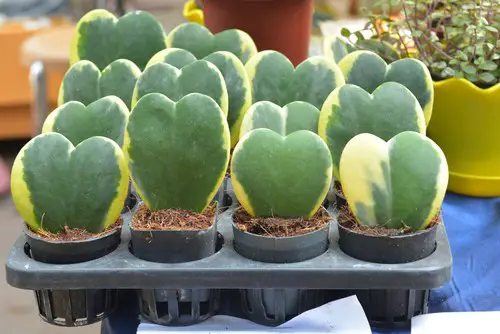
To prevent overwatering, ensure that the pot has proper drainage and only water the plant when the soil is dry to the touch. On the other hand, underwatering can be remedied by increasing the frequency of watering.
Pests, such as spider mites and mealybugs, can be controlled by wiping the leaves with a damp cloth or using insecticidal soap. Diseases, such as root rot and leaf spot, can be prevented by avoiding overwatering and maintaining good hygiene practices.
Environmental stress, such as exposure to extreme temperatures or drafts, can be prevented by placing the plant in a suitable location with moderate temperatures and indirect sunlight.
Frequently Asked Questions
Why are my hoya leaves turning yellow and falling off?
Hoya leaves may turn yellow and fall off due to several reasons, including overwatering, underwatering, poor drainage, improper lighting, pest infestation, and disease. Overwatering is the most common cause of yellowing and falling off of hoya leaves.
How do I prevent my hoya leaves from turning yellow and falling off?
To prevent hoya leaves from turning yellow and falling off, ensure that the plant is not overwatered or underwatered. Provide adequate drainage by using a well-draining soil mix and a pot with drainage holes.
Place the plant in bright, indirect sunlight and avoid exposing it to direct sunlight for extended periods. Regularly inspect the plant for pest infestation and disease and take appropriate measures to prevent or treat them.
What causes hoya leaves to turn yellow and fall off?
Hoya leaves may turn yellow and fall off due to various reasons, including overwatering, underwatering, poor drainage, improper lighting, pest infestation, and disease. Overwatering is the most common cause of yellowing and falling off of hoya leaves.
How can I save my hoya plant with yellow leaves?
To save a hoya plant with yellow leaves, identify the cause of the problem and take appropriate measures to address it. If the plant is overwatered, reduce watering frequency and ensure that the soil is well-draining.
If the plant is underwatered, increase watering frequency and ensure that the soil is moist but not waterlogged. If the plant is infested with pests or disease, treat it with appropriate measures.
What are the signs of an overwatered hoya plant?
The signs of an overwatered hoya plant include yellowing and falling off of leaves, wilting, root rot, and a foul odor from the soil. The soil may also be waterlogged and appear soggy.
How do I know if my hoya plant has root rot?
To know if a hoya plant has root rot, gently remove it from the pot and inspect the roots. Healthy roots are firm and white, while rotted roots are mushy, brown, and have a foul odor. The leaves may also turn yellow and fall off, and the soil may appear waterlogged and smell bad.

Hey, I’m Lisa and I’ve been an avid gardener for over 30 years. I love writing, talking and living in the garden! Feel free to connect with me on my socials below

